The Last Starfighter (1984)
Directed by: Nick Castle
Written by: Jonathan R. Betuel
Starring: Dan Mason, Dan O'Herlihy, Kay E. Kuter, Lance Guest
USA
AVAILABLE ON BLU-RAY: 15th JULY, from ARROW VIDEO
RUNNING TIME: 100 mins
REVIEWED BY: Dr Lenera
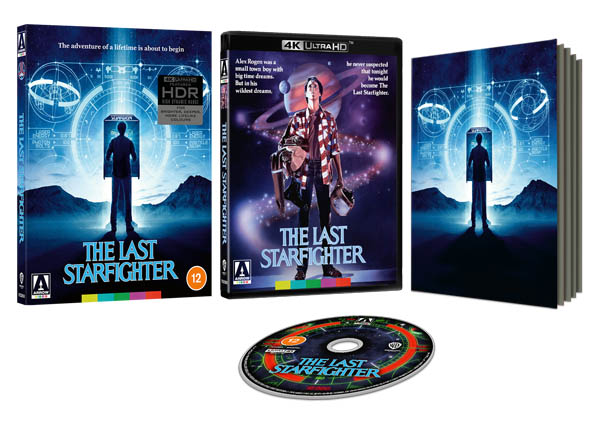
Alex Rogan lives in a trailer park with his mother Jane and his younger brother Lewis. Alex helps his neighbors in small tasks and is waiting for a loan to go to university and move from the camp with his girlfriend Maggie Gordon to the city. His scholarship is rejected, but he breaks the record of the Starfighter video game and is visited by a man called Centauri who tells him that he works in the company that manufactures the game and invites him to a ride in his car. Centauri is actually an alien, his car is a spacecraft and the Starfighter game is actually a test to find skilled warriors to protect the Star League frontier against Xur and Kodan’s armada which wants to conquer the galaxy….
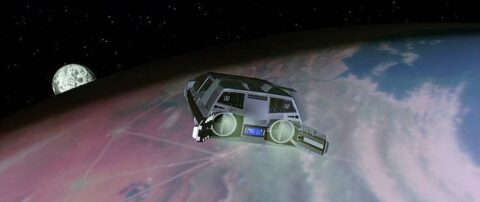
The Last Starfighter seems like it was carefully crafted both to please and to make money when it came out, but, while it’s become a considerable cult favourite over the years, it failed to be the big success one would surely have expected. It was a favourite of one of my two much younger brothers when it came out on video, but this was the first time I’d seen it in nearly 40 years. I’ll be honest and admit that it obviously didn’t make much of an impression on me – my brother notwithstanding – back in the day, seeing as I was never compelled to revisit it, but Arrow re-releasing it in a spruced up version finally got me to do so. Reeking with ’80s charm, it in part seems like an attempt to repeat the success of Star Wars [sorry folks, I don’t go in for that “A New Hope” stuff, I know that’s weird but never mind], almost as if, in an alternate universe, the only way that George Lucas could film his baby was to significantly reduce the budget [something that setting much of it on Earth would have certainly achieved] and the scope of his story. Yet its feel and approach is a bit different, with a lot more humour, some of it probably not of the type that Lucas would have put in though the essential idealistic innocence remains, not to mention much of its look. Tron was the first film to use extensive computer imagery, and The Last Starfighter was the second. Many of the visual effects look interesting rather than good, and the action feels truncated, but the premise is nifty, the characters are nice to spend time with, and there’s genuine warmth and soul in the thing, which perhaps makes it seem better now than it did in 1984; I certainly liked it a lot more, anyway, and certainly won’t be waiting another 40 years to watch it again.
According to screenwriter Jonathan R. Betuel, the idea for it came about when he wandered into a video arcade and saw a young boy playing a video game. At that time, he was reading the novel about King Arthur, The Once and Future King, by T. H. White. He wondered what would happen if a video game were a metaphorical sword in a stone, and a boy racked up an incredible score, which would cause a ripple effect across the universe. During the movie, when Centauri gets into trouble for using the game to recruit starfighters, it’s referred to as “The Excalibur Test”. Centauri was Robert Preston’s final role in a theatrical film. The character was rewritten once Robert Preston came on board as a nod to his most famous role as “lovable conman” Professor Harold Hill in The Music Man. The Last Starfighter, early drafts of which were called Antares Recruit. Betuel did 14 drafts before Castle was satisfied. 27 minutes of CGI were created by Digital Productions, who estimated that using computer animation required only half the time and between a third to half of the cost of traditional special effects, though time still ran out and some things weren’t finished. Not all effects were done this way anyway, with still more practical stuff then we would normally see today. The ending was changed so that a major character wasn’t actually dead. A great number of the material with the Beta Unit character was shot after main filming was complete, because the test audience liked the comedy of the Beta scenes, and director Nick Castle [yes, the original Shape] decided they added more originality. This is why in many of the Beta scenes, Lance Guest is wearing a wig — he had cut his hair by the time those new scenes were shot. In 2007, a musical based on the movie was performed as part of the New York Musical Theatre Festival.
It’s odd for a film to open with a shot of an alien planet, and you might at first wonder if what we’re seeing is a very unrealistic representation of Earth, but we then pan out and move backwards to reveal a moon, then go through a space “tunnel” with lots of red sparks as the film’s title comes up, before going past our moon and transitioning to Earth clouds in the sky. It’s a pretty nifty opening, setting up immediately that there’s another planet out there that will feature in our story but revealing nothing else, therefore all of the other surprises that are to be offered. Tiny vignettes give us a sense of this lazy trailer park existence, from a cat coming out of a postbox waking up a dog to our hero Alex being told by his mum to fix a neighbour’s electricity, even though that means that Alex would be unable to meet his girlfriend Maggie by a nearby lake. A pan out from a lovely beach to reveal the same beach actually being a photograph on a wall reinforces this place as one which one needs to escape from. There’s a lovely feeling of Alex being destined for big things, from the place’s seeming sole black guy laments the fact that he’s not doing much with his life, to Alex gazing at the model planets above his bed. Maggie is dropped off by a male friend whom Alex is jealous of, though they’re soon kissing, something seen by his little brother Lewis.And then there’s this Starfighter, this video game that he seems addicted to, though admittedly there doesn’t seem like there’s much else fun to do in this place. He manages to beat the game, and a great example of this movie’s lovely naivete is when everyone comes out and is excited to see him having done this, when I’d have thought few of them would in actuality give a damn. His joy is considerably dissipated when he returns home to find out that mother has had a letter delivered which is his rejection from a university scholarship, But he then goes back out, obviously drawn back to the game, and it seems to be doing stuff despite having been switched off!
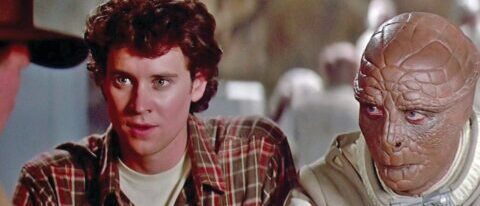
Of course that’s weird in itself, but then a cool looking car appears, and inside it is Centauri [because it’s a bit like “Atari”?], a man who claims he invented the game, and is looking for the person who broke the record on it. Apparently the game was meant to be delivered to Las Vegas but ended up at this place instead. Alex goes off with bis him in his car while another man named Beta gets out and remains behind. Some sort of android, his seeming job is to cover for Alex’s absence, something that should be easy seeing as he can replicate Alex’s appearance, shouldn’t? The car goes into space and through the tunnel that we saw at the beginning, into a spacecraft. Centauri tells Alex that the arcade game represents a real-life conflict between the Rylan Star League and the Ko-Dan Empire; the latter is led by Xur, a native Rylan traitor and son of Ambassador Enduran, the Starfighter commander, to whom the Ko-Dan Emperor has promised control of Rylos. Starfighter is, in fact, an elaborate recruiting tool, designed as a test to find those “with the gift”. Alex, expected to be the gunner for a Starfighter spacecraft called the Gunstar, is partnered with a reptilian pilot named Grig. He also learns that the Frontier is a forcefield protecting Rylos and its surrounding planets from invasion; Xur has given the Ko-Dan the means to breach it. Xur reveals he’s discovered an infiltrator in his ranks and broadcasts the spy’s execution to the Star League, then proclaims that once Rylos’ moon is in eclipse, the Ko-Dan Armada will begin their invasion. Alex then does something very believable; unnerved by everything he’s seen, and hearing from Grig that Earth wasn’t even intended to be approached yet because “it isn’t a member of the Star League….this is all highly irregular”, Alex asks to be taken home. But of course we just know that he’s going to have to take up the fight sooner or later.
The expected thrills are a tad subdued. Yes, we get some space battling, much of it while Alex is on a swivel chair just like the one Luke Skywalker used, and danger soon shows up on Earth too, but surprisingly little time is spent on this stuff, the climax being especially brief, though there are plenty of other things to enjoy. Probably first of interest in newcomer’s minds would be how the computer effects look. The all-digital composites may have truly impressed many at the time for not revealing any matte lines or poor density matches, and spaceships obviously seemed able to move with much more freedom and flexibility than even the photo-chemical experts at Industrial Light and Magic were able to achieve, but they have no real texture to them, and shots of a planet’s surface must have looked embarrassing even at the time, not to mention the explosions. It often feels like we’re just watching digital storyboards, and yet it’s fascinating and mostly not ugly; poor modern CGI can definitely be the latter. There’s also much good practical work to appreciate, such as the Space Car which was inspired by some Blade Runner designs, a small variety of aliens, and a shock reveal of a half-transformed face when Beta pulls back the covers of the bed he’ s been lying it. Indeed there are a few dark moments which, seeing how ridiculously tame ‘PG’-rated movies seemingly have to be these days in order to receive that certificate, may have been instrumental in getting it lifted to a ’12’ – or maybe it was the references to things like Playboy magazine or “strange sexual urges”. Or the drug references in one of the commentaries. When Alex is away, Beta has to pretend to be him and succeeds for a while as “an exact duplicate “ of him “but not as loud”. but is soon complaining about Maggie sticking her tongue in bis ear and repeating inappropriate lines he’s heard on TV, and doesn’t seem to know when to laugh. Of course he can ger away with being seen removing nis head then putting it back by Lewis by telling him that he’s just having a nightmare.
The humour, most of which concerns Beta, is never hilarious and just stays at being a bit amusing, but surprisingly doesn’t jar with the more serious stuff. But then lightness generally dominates anyway; we don’t feel the effect of a massacre, nor get a sense of the menace that the villains should provide. Of course, it’s soon established that Alex hears English due to a translation device. We do feel the teenage romance even though it’s only confined to a very few scenes, and especially the relationships between Alex and Centauri, and between Alex and Grig. Dan O’ Herlihy does exceedingly well in the latter role, coming through really strong despite wearing loads of alien makeup. He really was very good indeed. Unfortunately Guest doesn’t really have the necessary charisma or projecting of strength to make us believe that he can not only make a small elite selection of beings chosen from all over the place to save the universe but doesn’t even need to undergo training once he’s won the game; even Luke was trying to hit that ball with his lightsabre, and Alex isn’t even related to interstellar nobility. However, he’s curiously effective while playing his character’s replicant; his movements and reactions are perfectly pitched. A great deal of the film’s heart comes from score composer Craig Safan’s main theme, which is highly noble and heroic; its versatility allows for it to serve in romantic, sad and dreamy situations as well as the expected battle sequences. There’s some variety elsewhere including some subdued bits of electronica. There’s really not much to seriously dislike in The Last Starfighter, even if it’s just a little bit underwhelming.
PRODUCT FEATURES
Brand new 4K restoration by Arrow Films from the original camera negative
I’m still unable to view Ultra HD discs, but can tell you that this film already looks magnificent on standard Blu-ray, with perfect flesh tones, colour balancing and blacks. Perhaps the most surprising thing is that the majority of the CGI blends extremely well with the backgrounds; I’m not hugely knowledgeable about the technical side of things but maybe the nature of the restoration means that these shots looked a lot worse in 1984?
4K (2160p) Ultra HD Blu-ray presentation in Dolby Vision (HDR10 compatible)
Uncompressed 2.0 stereo, 5.1 DTS-HD MA and 4.1 audio
Optional English subtitles for the deaf and hard of hearing
Audio commentary with star Lance Guest and his son Jackson Guest
Arrow have ported most of the special features from their 2020 release, which was unbelievably the film’s first physical release in the UK since the days of video! However, two archival special featurettes, one audio commentary and some photo side shows are missing. even though they’re on Arrow’s US release. Rights reasons? I’d have liked to hear Castle and production designer Ron Cobb discuss the movie, and watch a “making of”, but there’s still plenty left, so let’s dig in.
Though Lance does this first track with his son, it’s often just the former on his own, with Jackson tending to be there to just back his father up. However, despite sometimes being reluctant to talk over people’s dialogue he provides a lot of interesting and sometimes amusing material, such as his audition scene being one where he’s playing two people [him and Beta] so rather difficult even if he hadn’t just had a car crash, Lewis being shown the Playboy magazine his character reads amd being shocked, and James Cameron wanting to create a montage of all the times characters say “let’s go”. Apparently also some have said that the effects would be done. Like Lance, and as usual with these things, I’d have no objection to this as long as the original version remained in circulation. We also learn that people have built the actual Starfighter game – which nicely leads to the last special features.
Audio commentary with Mike White of The Projection Booth podcast
While he leaves more and longer gaps towards the end, White generally provides a nice, well balanced track, with extra production information and appreciation with a little bit of criticism hear and there; for example he thinks the situation involving the villains isn’t clear or entirely successful. We also learn that Maggie was working on Days Of Our Lives during the day so found the shoot really grueling, points out a “bleeping flashing prop” that’s appeared in other films. and has a few interesting thoughts on the movie such as Alex basically being a cold-blooded mass murderer. White is clearly a fan of the film, a film which wasn’t well reviewed at the time of its release which White quotes evidence of, but doesn’t tend to go for gushing praise. Except for a few by Frank Djeng, this is the best talk track from a solo person I’ve heard in quite a while.
Maggie’s Memories: Revisiting The Last Starfighter – interview with actor Catherine Mary Stewart [9 mins]
Stewart, who still looks rather young, says how her character was basically the same as hers in Days Of Our Lives so found it easy to understand and play, that her and Guest were paired together during the auditions, and explains how a shooting in one of her major scenes was all practical effects. She seems glad to have been in the film, even though her character has little to do; you’d imagine that she’d be much more proactive if the film were made today.
Into the Starscape: Composing The Last Starfighter – interview with composer Craig Safan [21 mins]
Safan, a composer who never quite made the big time despite most definitely having the talent, says how the large orchestral score, inspired by the lush sound of Sibelius symphonies, was very different to what he was used to, which was electronic soundtracks, though he still employed two keyboards and on one track employed an electronic flute which doesn’t really sound like one. I always enjoy featurettes about the scores of movies,
Incredible Odds: Writing The Last Starfighter – interview with screenwriter Jonathan Betuel [9 mins]
After 20 years of being rejected, Betuell finally had a script bought by a studio. Earlier we’d heard that Castle had problems with it and insisted on a lot of extra work on it, but Betuel, perhaps understandably, plays that down. He says that he and Castle tried hard not to make the film like Star Wars, and that originally there was a lot more about the competition. He finishes by telling a bit about a planned sequel, though stops too early.
Interstellar Hit-Beast: Creating the Special Effects – interview with special effects supervisor Kevin Pike [10 mins]
Pike, who begins by saying that more things are up to the special effects crew than you might think – such as here the laser guns and the interior of the Space Car – goes through some of the numerous effects that are still practical, as well as saying that they put a chemical around the area of when they shot one scene involving a small amount of fire. And a forklift was employed for the final scene where Alex is lowered down from his spaceship to the ground.
Excalibur Test: Inside Digital Productions – interview with sci-fi author Greg Bear on Digital Productions, the company responsible for the CGI in The Last Starfighter [8 min]
Bear got to meet most of the people involved and brought Ray Bradbury along to get more interesting interviews and so that he could wander off. He describes the offices as having “a lot of wiring under the floor and going between the diff machines and workstations” He emphasises what a major revolution this began, despite things like there having to be a great number of passes before much could be achieved.
Greetings Starfighter! Inside the Arcade Game – an interview with arcade game collector Estil Vance on reconstructing the Starfighter game [8 mins]
Though I have practically no interest in computer games whatsoever, I found this to be a much more interesting featurette than I expected. Vance had been collecting arcade games and movie props for ages, but his Holy rail was always Starfighter. The genuine article built for the film seemed to be lost – so he made one himself, aided hugely by lots of people on forums with strange usernames whom he never actually met. He also says that he had to add levels because we see very little of it in the film.
Theatrical and teaser trailers
Reversible sleeve featuring original and newly commissioned artwork by Matt Ferguson
Illustrated collector’s booklet featuring writing by Amanda Reyes and sci-fi author Greg Bear’s Omni magazine article on Digital Productions, the company responsible for the CGI in The Last Starfighter
Limited Edition slipcover featuring newly commissioned artwork by Matt Ferguson
Those who can play imports might want to spring for Arrow’s North American release due to those missing extras, and it’s still giving Arrow money so don’t feel guilty about it. But those who can only play Region B releases won’t be missing out much. This is still a great release, and the film is really rather sweet and upliting. Recommended!





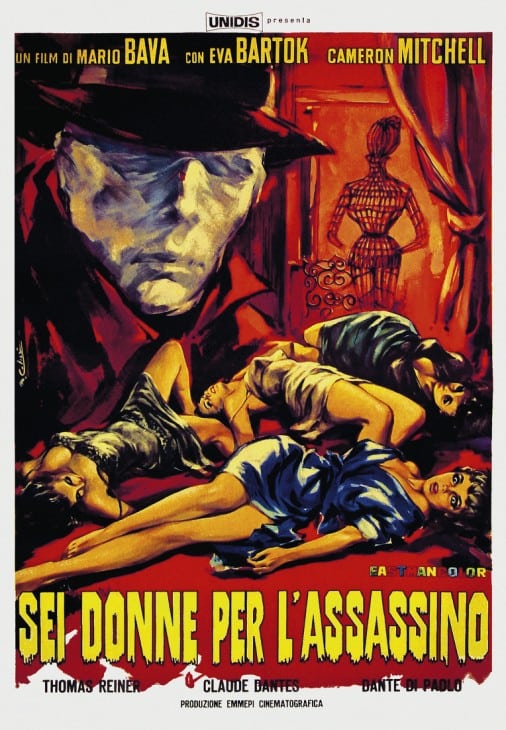
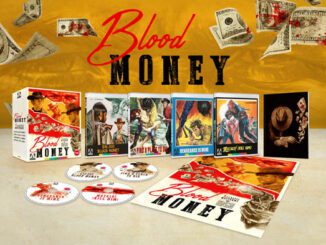
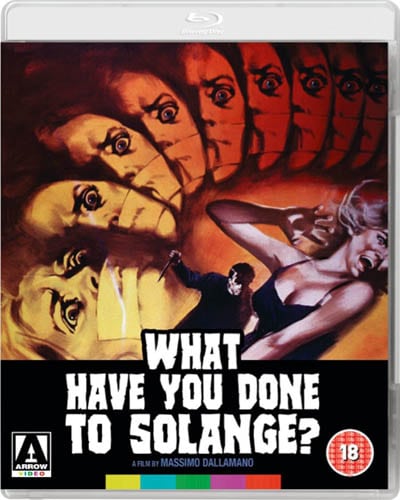
Be the first to comment